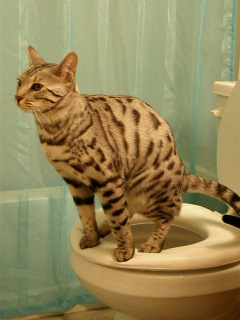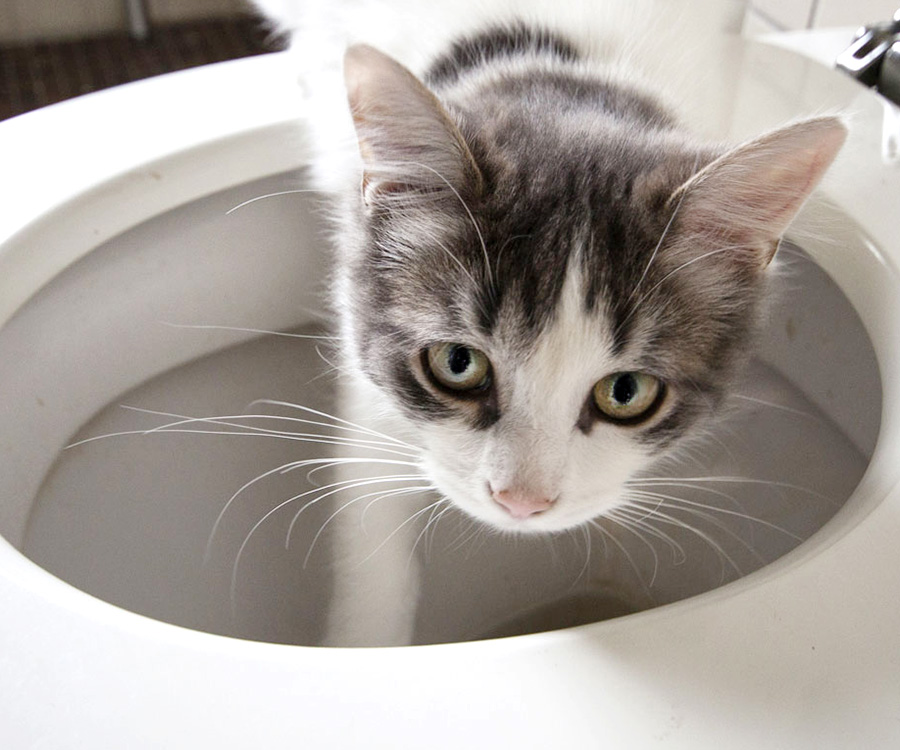Causes Why You Have to Never Flush Animal Waste Down the Toilet
Causes Why You Have to Never Flush Animal Waste Down the Toilet
Blog Article
They are making several great observations regarding Can You Flush Dog and Cat Poo Down the Toilet? in general in this article directly below.

When it comes to throwing away waste, particularly animal waste, many individuals often resort to the hassle-free choice of flushing it down the toilet. However, this relatively very easy service can have serious repercussions for the setting and public health. In this write-up, we'll check out why flushing pet waste down the toilet is a poor idea and supply alternate methods for correct disposal.
Intro
Appropriate garbage disposal is critical for preserving environmental sustainability and public health. While it may appear harmless to flush animal waste down the bathroom, it can cause different issues, both for the environment and human well-being.
Risks of flushing pet waste
Ecological impact
Flushing animal waste presents unsafe microorganisms and microorganisms right into waterways, which can negatively affect aquatic ecological communities. These virus can infect water sources and injury aquatic life, disrupting delicate ecological communities.
Public health concerns
Pet waste contains harmful bacteria such as E. coli and Salmonella, which can posture severe wellness risks to humans. Purging pet waste down the commode can contaminate water materials, bring about the spread of illness and infections.
Alternatives to flushing
Instead of flushing animal waste down the toilet, there are numerous alternative disposal methods that are more environmentally friendly and hygienic.
Composting
Composting animal waste is an environmentally friendly means to deal with it. By composting, organic matter is broken down right into nutrient-rich dirt, which can be utilized to feed yards and plants.
Garbage dump disposal
Disposing of animal waste in a garbage dump is one more alternative. While not as eco-friendly as composting, it is a safer option to flushing, as it protects against the contamination of water resources.
Pet garbage disposal systems
There are specialized pet waste disposal systems available that safely and hygienically dispose of pet waste. These systems usually make use of enzymes to break down waste and remove odors.
Actions to correct animal garbage disposal
To ensure correct disposal of pet waste, comply with these steps:
Scooping and landing waste
Frequently scoop and bag animal waste utilizing biodegradable bags. This avoids waste from contaminating the atmosphere.
Utilizing designated waste bins
Dispose of bagged pet waste in marked waste bins, such as garden compost bins or garbage dump bins. Prevent flushing it down the commode in any way costs.
Cleaning litter boxes and family pet areas routinely
On a regular basis tidy can and animal areas to avoid the accumulation of waste and germs. Use pet-safe cleansing products to preserve health.
Advantages of proper disposal approaches
Embracing appropriate disposal approaches for pet waste supplies numerous benefits:
Reduced environmental pollution
Appropriate disposal approaches minimize the danger of environmental pollution, securing waterways and environments from contamination
Reduced risk of water contamination.
By staying clear of flushing pet waste down the toilet, the danger of water contamination is considerably reduced, securing public health.
Enhanced cleanliness and health
Appropriate disposal approaches advertise better hygiene and hygiene, developing a much safer environment for both humans and pets.
Conclusion
Finally, purging animal waste down the toilet is damaging to the atmosphere and public health. By adopting different disposal techniques and following correct waste management techniques, we can lessen the adverse effect of animal waste and contribute to a cleaner, healthier planet.
What To Do With Dog Poo – The Do's And Don'ts Of Disposing Of Faeces
Dog poo bins
Some councils provide dedicated dog waste bins in popular dog-walking areas that can take dog poo that has been bagged but you can legally dispose of dog waste in any public litter bin, as long as it is securely bagged. This also applies to your wheelie bin at home.
Do not flush
Water companies do not recommend flushing dog faeces down the toilet because certain parasites can survive the water processing treatment and are potentially harmful to humans. You should also never consider flushing dog poo that has been bagged down the toilet as the bags will not break down and instead create severe blockages in the sewage system.
In the woods
The Forestry Commission promotes a ‘stick and flick’ method for dealing with waste in the woods. This means finding a stick and using it to flick any poo from off the path so that it is out of the way of other walkers. You could also bury it as long as it is not in an area where there might be livestock.
Livestock
Parasites found in dog poo can be transmitted to livestock if they inadvertently eat infected faeces that has been left on grazing land. This could result in the death of sheep or abortion in cattle so you should always make sure you pick up your dog’s waste in fields where livestock could be present.

On a regular basis tidy can and animal areas to avoid the accumulation of waste and germs. Use pet-safe cleansing products to preserve health.
Advantages of proper disposal approaches
Embracing appropriate disposal approaches for pet waste supplies numerous benefits:
Reduced environmental pollution
Appropriate disposal approaches minimize the danger of environmental pollution, securing waterways and environments from contamination
Reduced risk of water contamination.
By staying clear of flushing pet waste down the toilet, the danger of water contamination is considerably reduced, securing public health.
Enhanced cleanliness and health
Appropriate disposal approaches advertise better hygiene and hygiene, developing a much safer environment for both humans and pets.
Conclusion
Finally, purging animal waste down the toilet is damaging to the atmosphere and public health. By adopting different disposal techniques and following correct waste management techniques, we can lessen the adverse effect of animal waste and contribute to a cleaner, healthier planet.
What To Do With Dog Poo – The Do's And Don'ts Of Disposing Of Faeces
Dog poo bins
Some councils provide dedicated dog waste bins in popular dog-walking areas that can take dog poo that has been bagged but you can legally dispose of dog waste in any public litter bin, as long as it is securely bagged. This also applies to your wheelie bin at home.
Do not flush
Water companies do not recommend flushing dog faeces down the toilet because certain parasites can survive the water processing treatment and are potentially harmful to humans. You should also never consider flushing dog poo that has been bagged down the toilet as the bags will not break down and instead create severe blockages in the sewage system.
In the woods
The Forestry Commission promotes a ‘stick and flick’ method for dealing with waste in the woods. This means finding a stick and using it to flick any poo from off the path so that it is out of the way of other walkers. You could also bury it as long as it is not in an area where there might be livestock.
Livestock
Parasites found in dog poo can be transmitted to livestock if they inadvertently eat infected faeces that has been left on grazing land. This could result in the death of sheep or abortion in cattle so you should always make sure you pick up your dog’s waste in fields where livestock could be present.

I have been very enthusiastic about Don't Flush Your Pets Poo Down The Loo, Vet Warns and I am assuming you liked our blog post. Sharing is good. You never know, you may just be doing someone a favor. Thanks so much for going through it.
Website Report this page